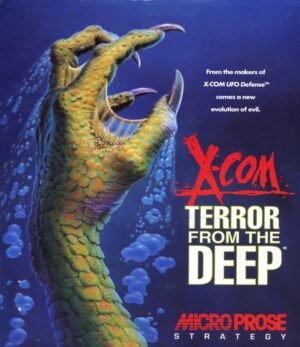Retro Replay Review
Gameplay
King’s Field II delivers a deeply immersive first-person action RPG experience that builds on the foundations laid by its predecessors. Players assume the role of Lyle, the king’s son, as he ventures through a sprawling interconnected world to recover the stolen Moonlight Sword and lift the darkness plaguing Verdite. Combat is deliberate and weighty—each sword swing and spell cast requires careful timing, and enemies often demand strategic retreats or well-timed parries.
The exploration mechanics remain a highlight of the series. Vast dungeon complexes give way to open-air expanses, ancient ruins, and bustling towns filled with friendly NPCs. While early areas can feel labyrinthine, the sense of discovery is deeply rewarding. Hidden passageways often lead to powerful artifacts or secret lore, encouraging thorough investigation and multiple revisits as you unlock new spells and obtain special crystals.
Magic plays a pivotal role in Lyle’s progression. Divided into elemental and hex disciplines, spells range from straightforward fireballs to more exotic enchantments that can debilitate foes or reveal hidden paths. Procuring the required crystals to learn each discipline becomes a quest in itself, providing side objectives that break up the main story and reward players with fresh tactical options. Mixing swordplay and sorcery feels balanced and gives the game a flexible combat rhythm.
Despite its age, King’s Field II avoids monotony by steadily introducing new weapons, spells, and environmental challenges. Boss encounters are memorable tests of skill and resource management, often forcing players to adapt their approach. Stamina management and inventory restrictions add tension, reinforcing the game’s “thoughtful, methodical” ethos rather than promoting button-mashing. For fans of deliberate combat and deep exploration, the gameplay stands the test of time.
Graphics
When King’s Field II was released, its graphical prowess stood out on the PlayStation. The game’s use of 3D environments with draw distances that reveal looming towers and distant mountain ranges still impresses by retro standards. Textures are modest by modern measures but convey a haunting, gothic atmosphere befitting a kingdom under siege by dark forces.
Lighting effects play a crucial role in setting the tone. Flickering torches dot dungeon walls, casting dynamic shadows that bring cramped corridors to life—and often trigger tension as unseen enemies lurk just beyond the light’s reach. Outdoor environments benefit from day-night transitions, with misty forests and moonlit plains that immerse players in Verdite’s mystique.
Character models and enemy designs lean into the macabre. From deformed undead knights to eerie wraiths, the variety and creativity of foes make each encounter visually distinct. While polygon counts are low and animations can feel stiff today, the art direction ensures every area has its own personality—a twisted crypt, a ruined village, or a mage’s secluded tower.
Performance is generally stable, but occasional frame drops do occur when the game renders complex scenes. These hiccups rarely detract from the overall experience, as the slower pacing encourages exploration rather than high-speed action. For players seeking old-school visuals with a moody, atmospheric flair, King’s Field II retains a unique charm.
Story
The narrative thrust of King’s Field II centers on Lyle’s quest to reclaim the Moonlight Sword after a terrible storm unleashes corruption across Verdite. This inciting event is simple but effective, providing clear stakes: save the king and the realm. As the story unfolds, familiar fantasy themes—betrayal, sacrifice, and the corruption of power—are explored in earnest, giving emotional weight to Lyle’s journey.
Interactions with NPCs add texture to the plot. Townsfolk share rumors, reveal hidden side quests, and impart crucial information about the four great mages whose magic Lyle must master. These characters are often under threat, further emphasizing the kingdom’s dire straits and imbuing each conversation with urgency. The dialog writing can be terse, but it efficiently conveys lore and motivation.
Each of the four mage trials introduces its own narrative arc. From delving into a sunken temple to braving a storm-lashed cliff fortress, these segments feel like self-contained mini-adventures that build upon the main quest. Earning a mage’s blessing not only unlocks potent spells but also reveals deeper insights into the kingdom’s history and the true nature of the Moonlight Sword.
While the storyline follows a familiar trope of “hero rescues kingdom,” its world-building and methodical pacing elevate the experience. The sense of isolation and the persistent feeling that Verdite’s fate hinges entirely on Lyle’s efforts create a compelling incentive to press forward. For players who appreciate a straightforward yet richly atmospheric tale, King’s Field II’s story remains engrossing.
Overall Experience
King’s Field II stands as a testament to early 3D RPG design, blending deliberate combat, expansive exploration, and a haunting ambiance. While modern gamers may bristle at its slower pace and occasional technical roughness, those who invest time will find a deeply rewarding adventure. The game’s sense of discovery—uncovering hidden paths, deciphering cryptic lore, and mastering diverse magic systems—remains its greatest strength.
Replay value is bolstered by the game’s non-linear structure. Players can tackle mage trials in different orders, experiment with various weapon-and-spell loadouts, and hunt down optional dungeons for rare artifacts. Completing all side objectives not only powers Lyle up for the final confrontation but also reveals alternate story details that enhance the narrative tapestry.
The audio design complements the visuals beautifully. A sparse, eerie soundtrack underscores tension, while ambient sounds—wind whistling through ruins or the distant clank of a skeletal guard—heighten immersion. Audio cues also signal lurking threats, reinforcing the importance of caution in every corridor and clearing.
Ultimately, King’s Field II offers an experience that diverges sharply from contemporary RPG conventions. It demands patience, rewards exploration, and places atmosphere at the forefront. For players intrigued by methodical gameplay, cryptic world-building, and the renaissance of first-person fantasy RPGs, this adventure remains a hidden gem worth revisiting or discovering for the first time.
 Retro Replay Retro Replay gaming reviews, news, emulation, geek stuff and more!
Retro Replay Retro Replay gaming reviews, news, emulation, geek stuff and more!









Reviews
There are no reviews yet.